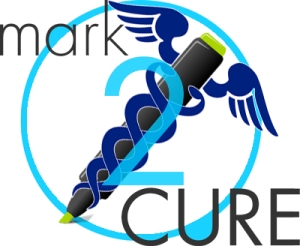Neat Science Thursday – Everybody can do science!
The crowdsourcing of science is not new with professor Olmsted’s crowdsourcing of meteorological observations in early half of the 19th century followed by the Audubon bird counts and National Weather Service weather observations since the early 1900s. Prior to the 1990’s and the widespread availability of the internet, crowdsourced science faced many logistical hurdles. Imagine trying to crowdsource research prior to the advent of computers! Sure, scientists could reach citizen scientists via newspapers or newsletters, but the effort needed to compile the data obtained from citizen scientists could not have been easy! For example, a scientist collecting information from citizen scientists might have to parse through snail mailed letters, or telegraphs, or carefully document information collected from phone calls. Once compiled, the local agency scientist or collaborator might then have to send the information to a national agency scientific team (depending how vast the effort). This information would then have to be compiled meticulously for useful analysis.
Since the 1990’s the logistics issues could be simplified via online forms enabling scientists to handle large volumes of data obtained by citizen scientists, but citizen scientists were still somewhat limited to participating in survey-based scientific endeavors (surveying birds, wildlife, whales, bugs, frogs , etc.) Scientists were beginning to harness the power of the people interested in participating in science, to paint an improved picture of the environment. In 2007, the GalaxyZoo team empowered even more citizen scientists to participate in their efforts. Citizen scientists no longer needed to be within specific geographic regions to participate (good luck joining whale watching surveys if you don’t live remotely near the ocean), they could inspect images to grow the existing body of knowledge in the field of astronomy…a virtual survey. Still, the crowdsourcing science efforts were somewhat limited to surveys and remained difficult to apply to biomedical research.
Then a research team at the University of Washington gamified protein folding and unleashed the power of citizen scientists and gamers. Foldit not only attracted citizen scientists, but gamers as well (though the two are not always mutually exclusive). Suddenly, a vehicle of entertainment was a vehicle of scientific discovery. In 2011 Foldit players helped to produce an accurate 3D model of the M-PMV retroviral protease. Crowdsourced science was successfully transitioning from a primarily survey/observational research to complex applications in biomedical research, and many scientific teams are now trying to crowdsource biomedical research problems from synthetic biology to mapping neurons in the brain or exploring the human gut microflora.
Of course, the Su Lab is extremely interested in participatory science, and an open access paper on the Su Lab’s initial attempt to harness the power of the crowd to select genes for predicting breast cancer survival was finally published two days ago. Dubbed, The Cure, the game was designed with the intention of identifying genes that could be used for improved predictions in breast cancer prognosis. In spite of the difficulty level of The Cure (admittedly, while entertaining the game can be ridiculously challenging), The Cure attracted about a thousand players and in a single year of play, these players identified gene sets which were comparable to those identified through decades of research. For a fascinating read, view the fully accessible research paper. Publishing these interesting results doesn’t mark the end of the Su lab’s foray into citizen science by any means, and more work is underway to empower people to help push science forward. If you’re interested in citizen science, join the Mark2Cure interest list at http://Mark2cure.org.
For other citizen science projects, checkout the list of citizen science projects on wikipedia or scistarter.org.